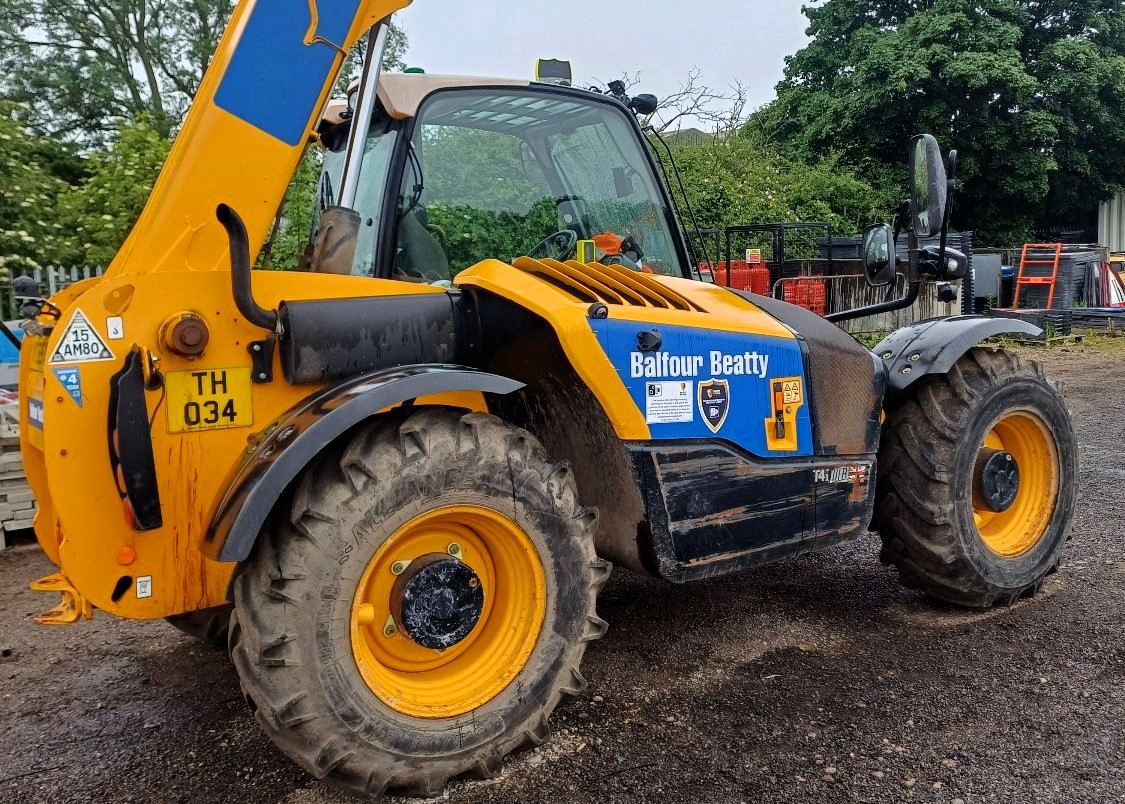Balfour Beatty has become the first Tier One contractor to mandate human recognition cameras on certain items of plant and machinery across all its UK operations.
According to the latest Work-related fatal injuries report by the Health and Safety Executive, the construction sector continues to account for the greatest number of workers involved in fatal incidents in the UK every year. Among these incidents, 18% of the injuries were from workers being struck by moving vehicles.
As part of its Zero Harm mission, Balfour Beatty has mandated human recognition technology to improve the people and plant interface risk. This latest technology is designed to proactively cover the “Blind Spots” around the plant. The cameras detect the human form and will trigger an alarm to alert pedestrians and the operator of the plant to the potential risk.
In addition to the camera, a ‘digital thumbs up’ system has also been introduced so plant operators can temporarily disable the machine to allow individuals to approach – creating a no entry sign outside the machine which turns into a green thumbs up symbol, when the operator signals that it is safe to approach.
Alongside the on-site alarms, data collection and sharing of hazards and incursions from the technology will enable site discussions and change individual and site behaviours.
Balfour Beatty will mandate human form recognition cameras on excavators above 13 tonnes, forward tipping dumpers over 6 tonnes, articulated dump trucks weighing more than 9 tonnes, rollers of 13 tonnes and above as well as telehandlers, dozers,and wheeled loaders.
Discussing the Group’s commitment to leveraging technology for safety, Balfour Beatty Chief Technology Officer Chris Johnson said:
“At Balfour Beatty, we believe that our long-term success is dependent upon our ability to keep our workforce, suppliers, subcontractors and members of the public safe. It is of utmost importance and our biggest priority.
“Today’s announcement is another important step towards eliminating harm across all Balfour Beatty projects. By mandating these new strident measures, we will continue this positive trajectory and ensure that everyone gets home safe, everyday.”
The human form recognition requirement for plants on Balfour Beatty projects across the UK came into effect in June this year and will be rolled out to supply chain partners as a standard in 2025.
ENDS
Media enquiries to:
Tom Boorman
Balfour Beatty
+44 (0)203 810 2345
Thomas.boorman@balfourbeatty.com
www.balfourbeatty.com | follow us @balfourbeatty
All non-media related enquiries should be directed to +44 (0)20 7216 6800 or info@balfourbeatty.com
Notes to editor:
- Balfour Beatty is a leading international infrastructure group with over 26,000 employees driving the delivery of powerful new solutions, shaping thinking, creating skylines and inspiring a new generation of talent to be the change-makers of tomorrow.
- We finance, develop, build, maintain and operate the increasingly complex and critical infrastructure that supports national economies and deliver projects at the heart of local communities.
- Over the last 114 years we have created iconic buildings and infrastructure all over the world. Currently, we are working to deliver Hinkley Point C, the first UK nuclear power station in a generation; constructing the world-class arts and cultural facility, the Lyric Theatre, in Hong Kong; and designing, building, financing, operating and maintaining the Automated People Mover superstructure at the fifth busiest airport in the world, Los Angeles International Airport.
- At Balfour Beatty, the safety and well-being of every individual is our utmost priority. We are committed to protecting our workforce and all those affected by our work, and we remain steadfast in our pursuit of Zero Harm.
- In the year ending 2023, our commitment to health, safety, and wellbeing led to record-breaking improvements in our safety performance.
- We achieved a 22% reduction in our Lost Time Injury Rate (LTIR) to 0.11, a 21% decrease in our Major Injury Rate to 0.02, a 29% drop in 3-Day Lost Time Injuries (AFR3) to 0.08, and a 33% reduction in 7-Day Lost Time Injuries (AFR7) to 0.05 compared to 2022.
- Additionally, total worked hours increased from 95 million in 2022 to 104 million in 2023, while Lost Time Injuries decreased from 150 to 117.
- Find out more about the progress we have made through our history, the innovations we are bringing to our projects today and our plans to take health, wellbeing and safety to the next level in the future here.

Image: Telehandler fitted with human form recognition
